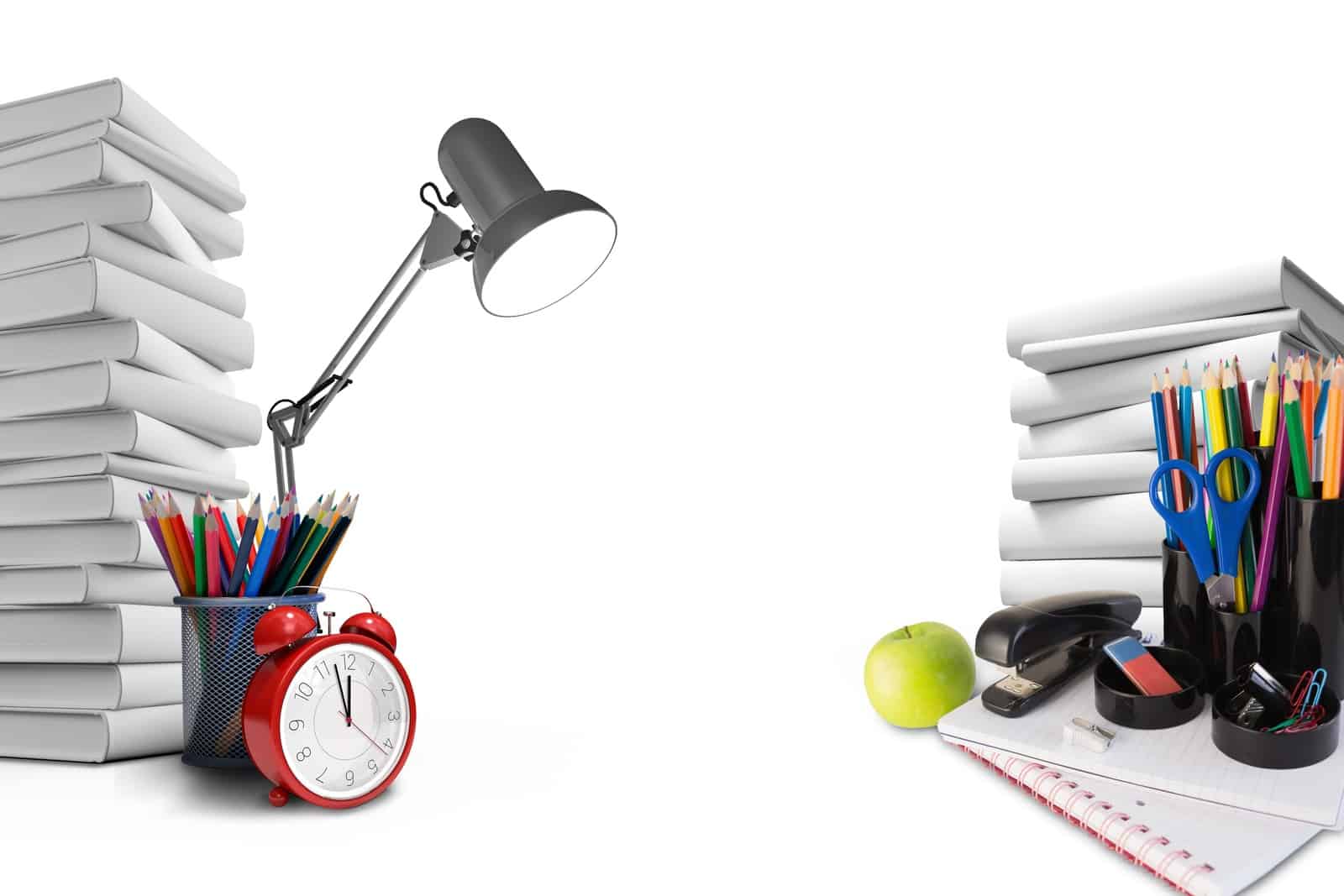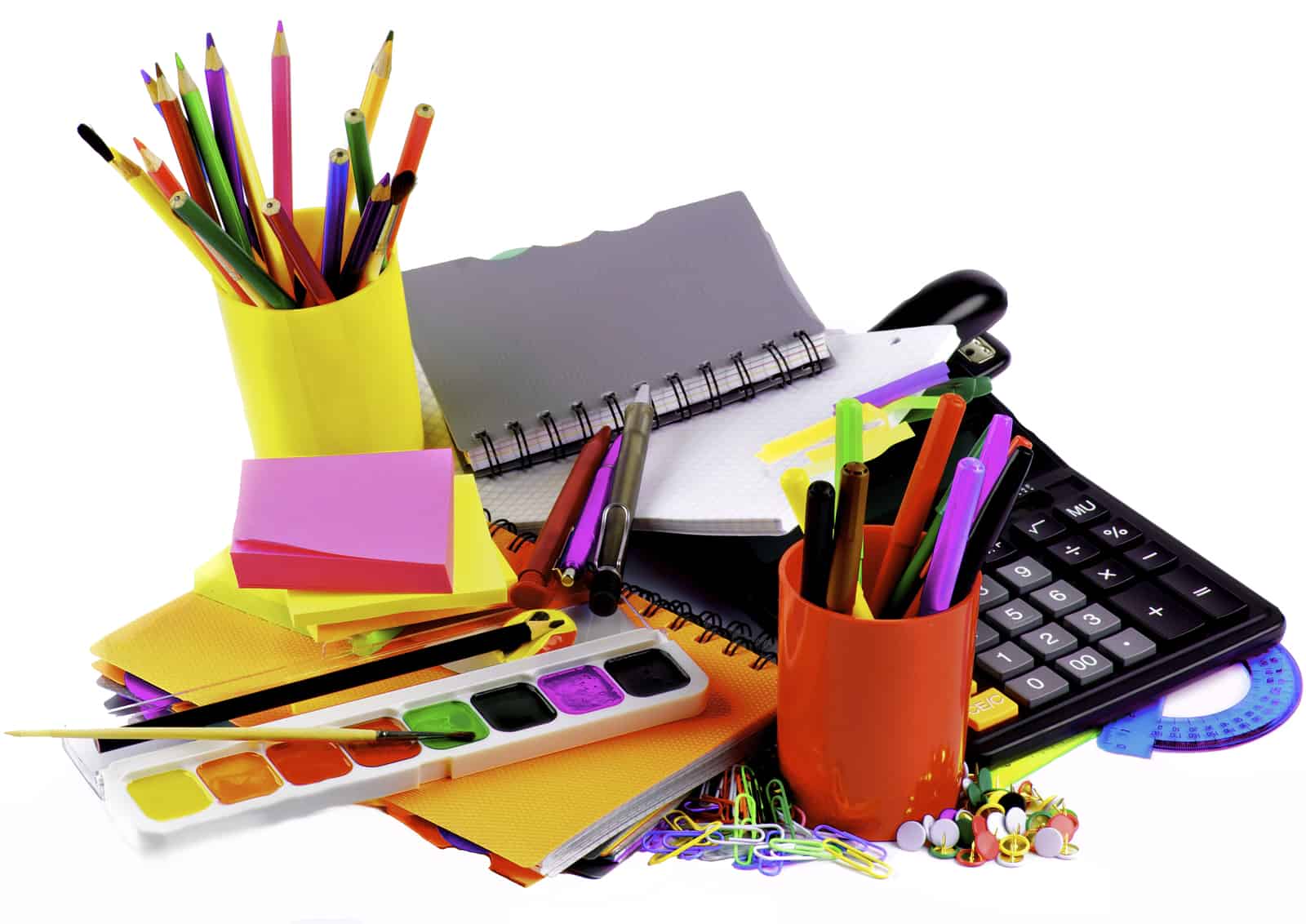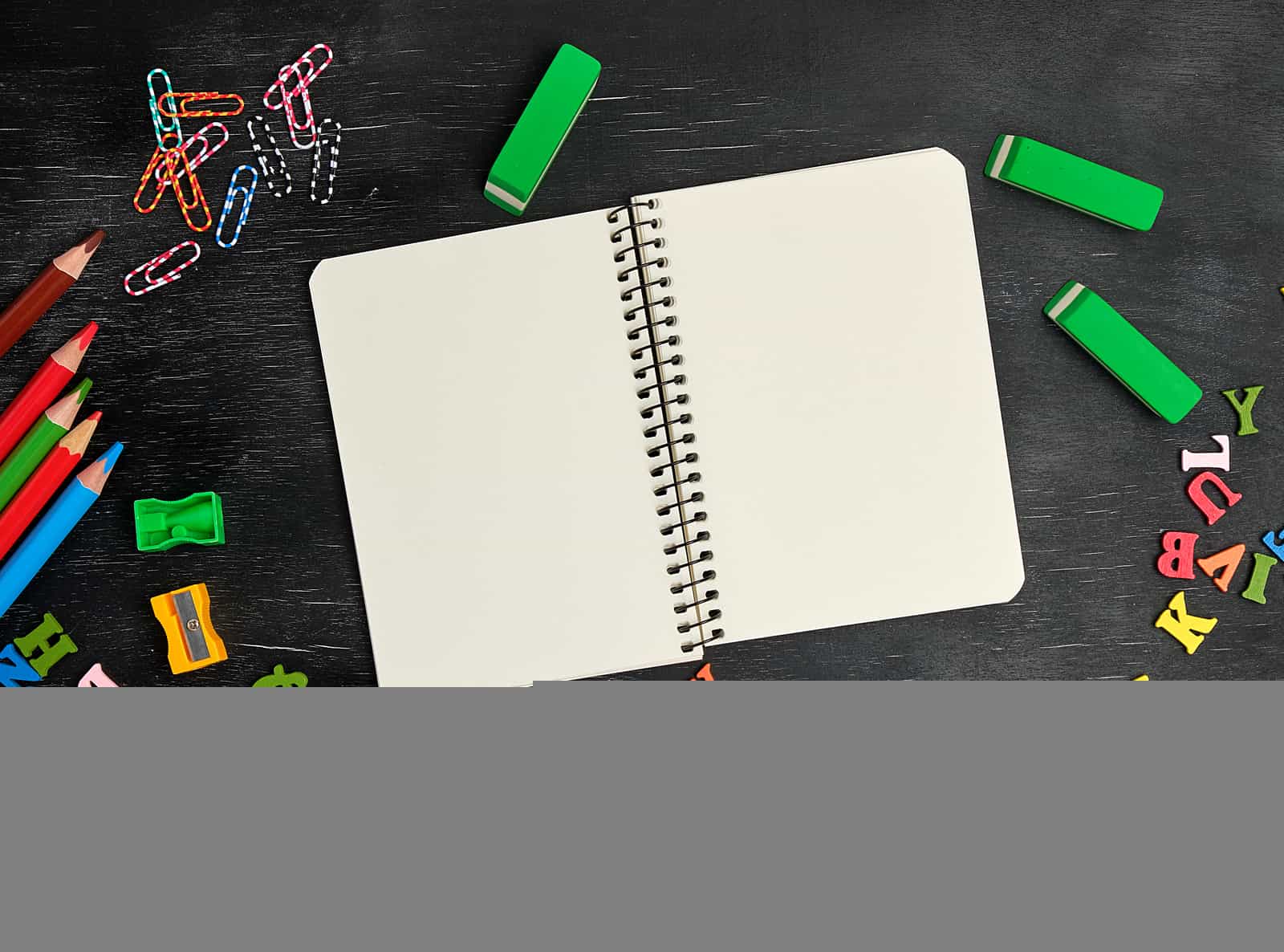
School and Classroom Etiquette | All You Need to Know
Quick, quick, come out of bed The sun has come over your head Your friends are waiting just for you I am trying my best. Now what to do? - Nursery Rhyme
Rise and shine! It is a new school day. School is where you meet your friends and acquire knowledge on numerous subjects. It teaches you how to be a self-dependent and hard worker and develops your skills. You also learn the difference between good and bad and become a better citizen. To get the best out of school, abide by the following list of rules of school and classroom etiquette.

School Etiquette
School etiquette helps the school year run more smoothly. It makes it easy for teachers to help you and all other students learn well for your benefit. Additionally, it helps you and other students respect yourselves, your peers, your teachers and your school.
It is essential to know that you are entitled to learn at school, just as the other kids are. So it is not your right to deprive the other kids of their rights. Here are some effective tips on school etiquette that you should follow.
1. Respect Everyone at School
Respecting yourself and being responsible for all your actions is the primary rule of school etiquette. Respect all teachers, adults and other kids and cooperate with them. You should also respect the differences of others because it enhances feelings of trust, safety and well-being.
2. Follow Guidelines
Another significant rule of school etiquette is to follow the school guidelines. Good discipline helps the education system significantly. Without it, the school would be in chaos, and there would be many juvenile behaviours. Therefore, be obedient, well-mannered, well-disciplined and respectful at school.
3. Wear Your Uniform and Keep Neat and Tidy
Keep in mind that you are an ambassador of your school. So, wear your school uniform or abide by the school’s dress code. Make sure your uniform is clean and tidy because a sloppy uniform is not cool and does not impress anyone. Do up your buttons properly and tuck your blouse or shirt in.
Also, tie your hair back, especially if it is long. Regarding jewellery, make-up and other adornments, follow the teacher’s instructions and obey the school rules. Remember that your personal presentation plays a crucial role in forming the first impression of you.
4. Be Organised
Being organised is also a significant rule of school etiquette.
- Before the beginning of the term, your school will most probably issue a list of essential supplies. Take your time purchasing all necessary items before the first day of school.
- Every school day, do not pack your school bag in the morning because you will do it in a hurry and might forget something. Instead, pack it the night before, along with your PE bag.

5. Return Borrowed Items
If you forget an item, such as a pen, a pencil or a book, you can borrow it from your classmate. Ask them politely, “Can I borrow your (pencil)?” If they agree, take it. After you have finished using it, you should return it to your classmate and thank them for lending it to you.
6. Be Kind and Helpful
Also, among the rules of school etiquette is to be kind and helpful. Doing so boosts your happiness and self-esteem. It also builds enduring friendships.
- Be friendly and considerate to everyone you interact with at school.
- If your classmate asks for your help, give them a hand.
- Before you say unkind words, take your time to think and consider how you would feel if someone had said such words to you.
- Apologise when you make a mistake and when you do something unintentionally.
7. Be Polite
You should also be polite to everyone at school. Being polite is one of the significant rules of school etiquette, too.
- Say “Please” when you ask your classmate for something.
- Also, say “Thank you” when your classmate assists you.
- Never tell lies because only cowards lie out of fear. I know you are courageous and will always tell the truth.
- Speak politely to both adults and children. Do not swear or use foul language.
- Rowdiness is not acceptable.
- When your teacher is speaking, do not interrupt.
- In the school dining hall, follow the rules of table etiquette.
- Also, do not smoke inside or outside school. It is a gross habit that can damage your body.
- Never take something from anyone without permission or without intending to return it because this is called stealing.

8. No Bullying
Respecting your classmates and colleagues is also among the top rules of school etiquette. Avoid bullying, whether verbal or physical. Bullying is inappropriate behaviour that shows the bully is a coward and weak person. Additionally, it may lead to disciplinary action being taken against the bully.
Never gang up against a weak student. Furthermore, do not use your strength or power to frighten or hurt your peers and force them to do something. Also, do not push your peers, pull them, fight with them or yell at them. Instead, participate in a systematic scientific activity, like Tae Kwon Do.
If someone tries to bully you, report them to your teacher immediately. All school teachers know how to deal with bullies and prevent bullying.

9. Compete in a Friendly Way
In school competitions, being gracious and displaying sportsmanship is one of the most important rules of school etiquette. Play hard, but play fair. Be competitive and do your best.
If you win, do not gloat over your peer’s defeat. Try to cheer them on. In contrast, acknowledge your peer’s victory with humility and avoid jealousy if you lose a competition. Remember that it is only an activity.
10. Keep Your School Clean
Always have fun, by all means. However, keep your school clean and safe.
- Do not litter the playground, the classroom or anywhere in the school.
- Never throw sharp or hard items that could injure your colleagues.
- If you use the toilet, do not mess it up and clean up after yourself.
- Additionally, do not vandalise or scrawl graffiti all over school walls. Report vandalism acts and graffiti offences to your teacher.
11. Respect Everyone Outside Your School
As we mentioned before, you represent your school, especially if you are in school uniform. So your behaviour should be exemplary. One of the top rules of school etiquette is to respect everyone outside your school.
- Do not be rowdy, and never gang up on kids from other schools.
- Also, do not use foul language.
- Never swear, yell, fight or push.
- Vandalism is a bad manner, too. Do not cover public and private property anywhere in graffiti.
When you are in public transport, respect every passenger.
- Avoid disturbing or offending any passenger.
- Offer your seat to elders and any other adult standing in the aisle.
- If you are standing, do not block the door and the aisle. Make sure you step aside to let passengers pass without asking you to do so.
Classroom Etiquette
Let us move now to classroom etiquette. Classroom etiquette is part of school etiquette. Inside your classroom, you attend your sessions. It is also possible to be fun in the classroom but not rude. However, choose the appropriate time to avoid disrupting your teacher or distracting your peers. Here are some rules of classroom etiquette that you should always observe.

1. Respect Your Teacher
One of the essential rules of classroom etiquette is to be respectful to the teacher.
- Follow the teacher’s guidelines and do what they ask you to do without grumbling. Good discipline helps the session run smoothly.
- While the teacher is talking, never talk, whisper or laugh.
- In addition, do not interrupt the teacher, pass notes, throw things away or make funny faces to force your classmates to laugh.
- Just pay attention and listen carefully to what the teacher says.
- Look at the teacher if you do not write notes.
2. Respect Other Students
Your classmates also have rights because they share the same classroom with you. Respecting them is among the significant rules of classroom etiquette.
- Cooperate with your classmates and respect their differences.
- Do not make fun of your classmates when they speak. Do not also roll your eyes or make funny faces and let them speak freely.
- Also, do not make them feel embarrassed by saying unkind words to them.
3. Cooperate When You Work in A Group
Another rule of classroom etiquette is to cooperate with your classmates. When working in small groups:
- Respect your group members and their work.
- Speak in a low voice to not let the other groups hear what you say.
- If you do not like an idea, never be rude. Explain your point of view politely.
4. Be Polite in the Classroom
Being polite is also among the critical rules of classroom etiquette.
- When you sneeze or cough, cover your mouth and nose with a tissue or with your elbow.
- Speak politely, and do not be rude.
- Do not argue with your teacher or answer back.
- Never make fun of your classmate when you disagree with them.
- Avoid laughing at someone’s question or answer.
- Do not bite your classmates.
- Never steal or snatch the things you like from other students.
- Pick up your litter and be clean.
5. Be Quiet
You should also be quiet and not disrupt the class in the following situations:
When you work quietly in the classroom:
- Do not distract your classmates by humming or fidgeting.
- If you finish first, do not brag.
- Avoid saying unkind or rude comments about the work of others.
When there is a presentation:
- Look at the speaker and make eye contact.
- Do not interrupt or distract them.
- Never make fun of them or say unpolite comments.
- If the speaker invites the class to ask, think of a good question or explain your opinion politely.
When you are in a test:
- Be quiet, and do not distract your classmates.
- Never get up and walk around unless there is an emergency.
- If you finish first, stay still and do not move until everyone finishes.
6. Always Be On Time
Another essential rule of classroom etiquette is to always be on time. If you arrive late, you interrupt the work and distract the teacher and the students. Additionally, you may annoy your teacher, and this is not good.
7. Be Organised and Tidy
Also, be organised and tidy. Never keep your place messy. Untidy places always cause distractions. Clean up the mess to be more focused and relaxed.
8. Keep Your Supplies Stocked
The most important rule of classroom etiquette is to keep your supplies stocked.
- Make a place in your desk for storing supplies that must be replenished, such as pencils and erasers. When these supplies are shrinking, ask your parents to restock them.
- Also, keep tissues and extra supplies inside your desk. Therefore, you will find one when needed and not constantly borrow from others.

9. Be Prepared
Another significant rule of classroom etiquette is to be prepared.
- Always prepare for class. Read the material carefully the day before the session. Then, circle the points you have not understood and formulate your questions.
- If you have a presentation, rehearse. Never brag, and be to the point.
10. Complete Your Assignment
Always maintain a homework checklist and submit your finished paperwork and assignment on time. Avoid cheating, copying or plagiarising answers. It is important to cite your source of information to strengthen your answer.
11. Wait for Your Turn to Ask A Question
Ask your teacher if you have any questions. However, wait for your turn. Do not say “next” or “me”. Raise your hand or follow the teacher’s guidelines. Sooner rather than later, the teacher will acknowledge you and listen to your question.
Virtual Classroom Etiquette for Kids
Since the outbreak of the coronavirus pandemic, digital screens have become more dominant than ever in our social life, study and work. Now, we have been relying on real-time video conferences to keep connecting with our friends, family and teachers. In the education sector, classrooms have become hybrid. Online classes have become part of children’s daily life.
On the other hand, many children find that a virtual classroom is a fairly recent challenge because it does not fully mirror the normal school day schedule. Studying online and studying face-to-face are not the same. This is because children should adhere to new, completely different rules when they participate in online sessions. Moreover, they have to change their methods of engaging and interacting with their teachers and classmates.
Whether you are studying online or offline, you should respect yourself and others and follow the teacher’s guidelines. In the following lines, let us navigate this challenging method and go through virtual classroom etiquette for students.
1. Have Healthy Breakfast
Like any other school day, start your day with a healthy breakfast because it nourishes your body for learning. Avoid sugary food at breakfast. Instead, eat food high in fibre, healthy fat and protein, such as creamy yoghurt parfait with fresh or frozen fruits and crunch granola, peanut butter toast, a boiled egg, a piece of cheese, a cup of milk or slices of avocado.
2. Test Equipment
Before the online session starts, set up all your equipment and test them. First, ensure that you have the zoom link, or the link of any other platform, to the virtual session. Next, set up your desk and clean it. Then, make sure your devices are charged and your headset/ speakers, microphone and webcam work flawlessly. Also, check whether your internet or Wi-Fi connection works properly.
If you are using your mobile phone, make sure you have a strong signal. In addition, turn off all notifications to avoid distractions. If you are joining the virtual session on a computer, use a wired connection because it is way faster than Wi-Fi.
Sign in to the platform ten minutes before the session to have enough time to troubleshoot, if necessary. Test your audio and video and check your screen sharing. Additionally, check if there is an unexpected update you need to download beforehand.
3. Be on Time
Maintaining punctuality in virtual sessions is one of the most important things in virtual classroom etiquette for kids. Traditional education requires you to wake up early to catch the bus to get to school on time. However, there are no buses that will deliver you to your virtual class. A virtual class requires you to plan ahead to be on time.
Never overlook the importance of being on time. It allows the teacher to give you permission to join the virtual session ahead of time and not interrupt the session. It also helps you make the best use of the session and avoid missing key information due to delayed entry.
4. Be Responsible
Being responsible is also one of the top significant rules of virtual classroom etiquette.
- Use your real name in the virtual class.
- Never share your Zoom link and password, or link to other platforms, with non-authorised users.
- Close all unnecessary applications and tabs before screen sharing. Also, make sure there is nothing personal on the desktop before sharing your screen in the session to avoid embarrassment.
- Respect your teacher and classmates.
- Always be encouraging and respect everyone’s opinions.
- Do not use emojis a lot and use them appropriately.
- Never shout or interrupt speakers. If you want to speak or answer a question, use the “Raise Hand” function on the platform.
5. Be Prepared
Before the session, read the course material carefully. If you have not understood a part, circle it and formulate your questions. During the session, wait for your turn and ask your teacher all the questions you have written.
While the teacher is talking, write notes in your notebook. If they send important links, bookmark them for reference. Also, be ready to interact with your teacher and classmates and discuss any point in the material or assignment with them.
If you have a presentation and you fear speaking to a group, rehearse. However, take care! Be clear and to the point, and never brag. Also, clear your desktop of unnecessary files or tabs if you will share your screen.
6. Dress Appropriately and Be Presentable
Zoom and other virtual meeting applications have the option of switching your video off or on. If your teacher requires you to switch your video on, you should brush your teeth and hair and dress properly before you join the virtual class. Your cute pyjama is not the appropriate dress for your online sessions. Wearing a pyjama shows that you are disrespectful to your teacher.
Instead, dress in your regular school uniform or dress code like you are going to an offline class. This helps you mentally prepare for your virtual sessions. Before you join your online class, make sure you are well-groomed and camera-ready.
7. Sit at A Desk or A Table
A virtual class with video is the same as attending an offline class. Laying down or lounging is not appropriate in both situations. Avoid sitting in the bedroom or the bathroom. Also, do not sit on your bed, recliner, sofa or couch.
The ideal place for attending an online class is to sit at a desk or table to be more focused. An appropriate posture is also essential to show that you respect your teacher.
8. Stay Seated and Present
During the online class, stay seated in one place. Use attentive body language: sit upright and straight, do not move too much and do not let your eyes wander a lot. If you have to leave or turn off your camera, inform your teacher first. Also, pay attention and participate in the discussions with minimal distractions. Make sure you clearly view the slides on the screen.
9. Follow the Instructions
Once you attend the virtual session, adhere to the teacher’s guidelines and instructions. These guidelines create the most productive and inclusive learning environment for every student.
If your teacher request to keep your camera on during the online class, you must do so. Some teachers prefer all students to be visible during the session. This is to ensure that you listen attentively and judge whether or not you understand the lesson from your facial expressions.
On the other hand, you must turn off your camera and microphone if your teacher asks you to do so. Leaving your microphone on can cause an audio echo or a feedback loop, thus disturbing the whole class.
10. Be Aware of Your Surroundings
If you switch your camera on, you should also check your surrounding and lighting before you join the online session. Make sure you do not have anything inappropriate in the background and that the lighting is perfect. The place should be professional yet comfortable. A professional setting helps you retain your focus during the online session.
- Avoid offensive or embarrassing backgrounds, whether real or virtual.
- Make sure the background is clear, and it is preferable to be a wall.
- Avoid sitting with a window or direct light (too little or too much) behind you. This will cause bad lighting, and it will be very hard to see you.
- Instead, face the window or the light to let everyone see you clearly.
- Do not sit in a messy room or in a place where the closet is open behind you.
- Never have a pile of dirty or clean clothes in the corner.
- Never show unmade or made beds in the background.
- If you cannot find a real professional background, use one from the backgrounds offered in the applications.
- Face the camera. Do not put it higher or lower than your face.
11. Choose a Quiet Location
In addition, sit in a quiet, well-lit room. This is because your microphone picks up ambient noises, like the nearby chew, kettle and microwave, besides your voice. The place should not have pets barking or chirping. Also, find a place with no babies crying or screaming in the background. If you live on a busy street, choose a quiet location in the house that has no loud noises.
12. Avoid Distractions
Silence, sometimes, can be awkward. On the other hand, noise can distract your teacher and colleagues and derail the session. So try to keep silent during the virtual class to make it easy for you and everyone else and not miss important information.
It can also be challenging to concentrate in a virtual class due to the presence of many distractions, such as mobile phones, TVs, online games, toys, animals and babies. All these distracting elements can divert your attention, as well as the attention of your teacher and colleagues. So keep all forms of distractions away to concentrate in the session.
13. Avoid Multitasking
Also, avoid multitasking. While you are online, it is tempting to check your email or social media accounts. It is also easy to text, do house chores, play games or work on other classwork. However, all these actions can distract you.
Turn off all notifications and turn off your mobile phone or keep it on silent mode. Do not open a new tab and surf the internet. This is because you might miss your turn to talk and derail the session. Focus and give your teacher your full attention.
14. Mute Your Microphone
It is better to join the online session while you are on mute to avoid an audio echo or a feedback loop. Mute your microphone when you are not talking unless your teacher asks you otherwise. If you do so, the audio will be of better quality for everyone, and your colleagues will be able to share their thoughts and participate in the discussions without frustration.
15. Leave the Keyboard Alone
Never type on the keyboard when your microphone is on because it causes distracting noise. Furthermore, it prevents you from focusing on the session. If you want to take notes, keep your notebook and writing stationery handy in advance.
16. Use the Chat
You can use the “Chat” function while you are in the virtual class. Avoid chatting and distracting your teacher and colleagues because this is not social time. However, use this option to ask a question or ask for clarification without interrupting the session. Write sentences that are free of grammar and spelling mistakes. The function is also used to share important links and resources with others.
17. Participate Politely
Suppose you have a question or want to engage in a polite discussion actively, do not interrupt your colleague while s/he is speaking. Instead, ask permission to speak. Use the “Raise Hand” function on the application/platform. Then, wait for your chance patiently, and the teacher will give you permission to talk. This allows the class to proceed in order and with clarity.
When it is your turn to talk, do not forget to unmute yourself first. If you have a problem with the audio, inform your teacher and colleagues. Use headphones or earbuds to limit sound distractions. Look at the camera if it is on. Introduce yourself before you speak to help others recognise who you are, especially when your camera is off. You can simply say: “Hello! This is (your name)”.
Speak up! Raise your voice and be articulate. Be specific, simple and to the point. Take part in your learning community, and do not be just a passive listener who does not contribute to the class. However, make sure you keep to the topic. Discuss what is relevant to the topic and not off-point.
18. Do not Record
Recording the online session can be of benefit because you can go over it later on. However, do not record unless your teacher permits you to do so. This is because your teacher may provide confidential information in the session. If you record it, it may become available online to everyone.
19. Be Patient
In online sessions, everything seems to take a longer time. So stay patient. Everyone in the online class can experience issues with the network or equipment, including you. If your teacher or classmate experiences such a scenario, do not be hostile and disrespectful. On the other hand, be patient and allow the one experiencing the issue some time to fix the problem.
20. No Food During the Online Session
Like normal school days, no food during the virtual session. Do not drink or eat and chew. Stuffing your mouth can distract others. Additionally, you will not be focused on the discussion and may drop crumbs all over your desk and keyboard.
21. Complete Your Assignments
An online session does not mean you neglect your assignment and do not submit or complete it. One of the significant rules of virtual classroom etiquette for kids is to complete your assignment or paperwork and submit it on time. By doing so, you show respect to your teacher and appreciate his/her work. You can upload it to the drive and send the link to the teacher or write it in an email and send it.
22. Stretch Between Sessions
Between sessions, make sure to get up and do some stretching exercises. Stretching is beneficial for you because it improves motion in your joints, decreases feelings of stiffness and increases blood flow.
23. Report Your Absence
If you will be late or not present during an online session, inform your teacher about your delay or absence. Ask your parents to email your teacher or email the teacher yourself. This indicates that you show respect for your venerable teacher.

Email Etiquette for Students
You possibly know how to text and find information quickly on the internet. However, sending emails might be one of the most challenging tasks you are requested to do on the internet. What if your teacher asks you to submit your assignment through email? Take it easy, bud! As part of school and classroom etiquette, email etiquette for kids exists to help you end the frustration of email correspondence. In the following lines, we will list the rules of email etiquette for students that will allow you to send effective emails to your teachers and future employers.
1. Be Professional and Efficient
The most significant rule of email etiquette for kids is to have a professional email address with your real first, middle and/or last names. The way you write your email is also important because it reveals your behaviour and personality aspects.
Unlike a handwritten letter, a professional email should be brief and to the point. Avoid unnecessary embellishments and never engage in small talk. A short email shows that you respect your teacher’s time and value yours. It also shows that you are capable and responsible.
2. Write A Clear Brief Subject
Do not leave the subject line blank. The subject line is like the thesis statement in your paper. It should be clear and brief and indicate what the email is about. An informative subject line makes it easier for you to find any email you want at any time. For example, it is better to write “Maths Homework – Erin Kelly – 3rd Year” in the subject line instead of just “Maths.”
3. Use Formal Salutation
Next, start your email with a greeting to motivate your teacher to review your entire email. As a sign of respect, use a formal salutation, like “Dear, To or Hello Mr/Ms [Name]”.
4. Introduce Yourself First
Do not assume your teacher will know who you are from your email address. Make sure you introduce yourself in the first paragraph; give your name and your class number.
5. Start With Important Information
If you are asking a question or requesting something, write the important information first after introducing yourself. It is because your teacher has a pile of emails in their inbox and takes a few seconds to scan each email. Suppose you have several important questions, issues and/or requests, write a summary of them at the beginning of the email. Then, structure your message with a numbered list. Otherwise, write several emails, one for each issue.
6. Be Careful with Attachments
Do not send an attachment in a blank email. Follow the abovementioned steps and write a clear, precise email. Never send the attachment with its default name (i.e. Document). Give it a brief informative title, and then write your name (i.e. Chemistry Homework – Jack Murphy). In the email body, mention that there is an attached file and write its name. Before you send the email, make sure the file is attached.
7. Be Polite From Start to Finish
At the end of the email, thank the teacher for their time and consideration. If your teacher sends you an email or replies to yours, determine its tone and reply if necessary.
8. Make it Readable
When replying, cite the necessary information. Copy the questions and write the answers below each question. If you are writing paragraphs, avoid starting each new sentence on a new line.
9. Use Formal Language
Never use shorthand in a formal email. Make sure you spell out all the words if they are not recognised acronyms. Take your time checking your spelling, grammar and punctuation before you send your email. Writing a clear, perfect email with no mistakes will make your teacher happy and proud.
10. Keep Your Promises
If you promise your teacher to submit your homework at a specific time, make sure you do so on time. If not, request an extension.
11. Be honest
Be honest in all your communications. Never tell lies in your email to deceive your teacher. Always tell the truth even if your teacher does not accept your excuse or request.
12. Follow the Right Structure of a Formal Email
Set the Right structure for your email. The following structure applies to all email platforms. The sequence is the same, but the design and naming have some differences.
a. To
In this field, enter your teacher’s email address. Make sure you write it without any typos. If you write it wrong, you will receive a failure email telling you that this email address does not exist.
b. CC (Carbon Copy)
If you want to send your email to another person, just enter their email address here. The original recipient can see that you have sent a copy of your email to another person and can see their email addresses.
c. BCC (Blind Carbon Copy)
Similar to the previous field, this feature allows you to send a copy of your email to another person. However, the recipients in the To and CC fields will not know that you have sent a copy to other recipients.
d. Subject
Your subject should be clear, brief and informative.
e. Email Body
Your message should go here. Keep your message as succinct as possible. Check your spelling, grammar and punctuation before you send your email. Also, make sure you have attached your file if there is any.
Greeting
Use “Dear or Hello Mr/Ms [Name]” at the beginning of your email body.
If you know the recipient’s name, use it here. “Dear Sir/Madam” is polite but impersonal. Then explain who you are because your signature will come at the end.
Main Body
Next, give your name and class number in the first paragraph. If you have several questions and requests, discuss each one separately in a numbered list. Then, be appreciative of your teacher’s time and consideration.
Signature
Finally, the signature comes. Write your name at the end of the email, along with your phone number and course name.
f. Attachments
If there is any attachment, make sure you mention what it is about in the main body. It is better to combine several pictures into a single PDF file rather than sending multiple pictures. Rename the file with a brief informative title and your name.
13. The Ultimate Email Checklist
Before you press the “Send” button, check the following:
- Your teacher’s email address
- The subject
- The grammatical structure of your email
- Spelling and punctuation
- Your signature
- Your attachment
14. Consider Communicating in Person
It is always better to request something or ask your question in person, especially if it is urgent.
In A Nutshell
we have discussed the most significant rules of the school and classroom etiquette for kids. Additionally, we have talked about email and virtual classroom etiquette for kids. Follow these rules, and I am sure you will shine this year and in the coming years in your school. You can also read our blogs about Good Manners, Social Media Etiquette and Table Etiquette for kids.


Leave a Reply